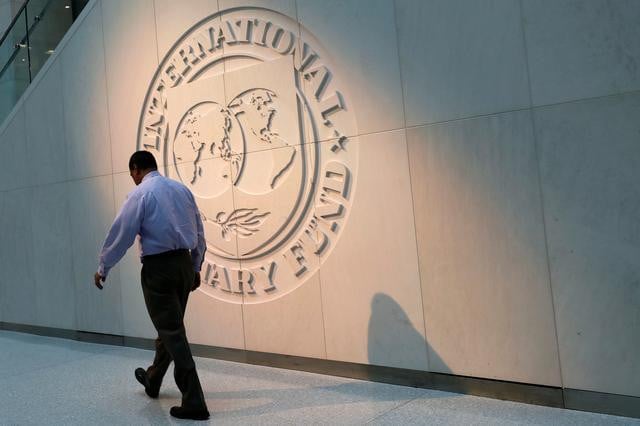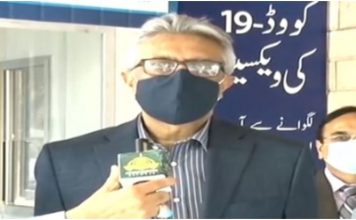ISLAMABAD:
As the International Monetary Fund (IMF) programme remains the only viable option to avoid sovereign default, the government sees stagflation and low foreign exchange reserves as the key challenges in the remainder half of the fiscal year.
Two separate events on Friday –a monthly economic outlook report by the Ministry of Finance and a closed door civil-military huddle at Prime Minister House – underpin the challenges that Pakistan’s economy faces and the solutions to overcome them.
The challenges were summarised in the report and the future roadmap was presented to the top civilian and the military brass in the inconclusive National Security Committee (NSC) meeting.
The Ministry of Finance on Friday claimed that stagflation and low foreign exchange reserves would remain challenges for policymakers but said that the external deficits were on the decline and could now be comfortably financed.
“Combination of low (economic) growth, high inflation and low levels of official reserves are particularly challenging for policymakers,” the Economic Adviser Wing of the Ministry of Finance stated in its monthly economic outlook report released on Friday.
The report was released a day after the central bank reported that the foreign exchange reserves had slipped to below $6 billion.
The inflation was projected to remain high at around 23% and the economic growth at around 2% — the combination that makes the conditions of stagflation.
The finance ministry’s report came amid closed-door discussions revealing that there was over $8 billion external financing gap against the requirements in the remainder half of the fiscal year.
The gap widened as compared to the earlier estimates of around $3.5 billion due to low credit ratings and high risk of defaults that would result into non-materialisation of the some of the planned inflows.
The NSC was briefed on Friday that the IMF programme remained the only viable option, irrespective how painful the revival process would be.
It was further discussed in the meeting that in case Pakistan did not take the IMF path, the economic revival process would be prolonged, highly risky, and even more painful, which would also require sacrifices by all the stakeholders.
Although, the government claimed that it had made arrangements for the $32 billion gross external loans for this fiscal year but these plans were not workable without the IMF support.
The revival of the IMF programme would require increase in electricity prices, imposition of new taxes and letting the rupee gain its real value by ending administrative controls introduced by the State Bank of Pakistan, according to the sources.
It was also discussed that diplomatic channels should be used to convince the IMF to soften its stance.
The finance minister’s concerns were that in the midst of an already high inflation rate, putting huge burden on the people would not be possible.
The Ministry of Finance in its report stated that for fiscal year 2022-23, economic growth was likely to remain below the budgeted target due to devastation created by floods.
In the short run, demand management policies by Pakistan’s central bank and the government were designed to fight inflation and protect official reserves and protect inclusive growth, it added.
Most of the high frequency indicators showed signs of lower growth since the start of the current fiscal year, as the economic situation was faced with severe headwinds both at global and domestic ends.
Assuming targeted remittance inflows, the expected improvement in the trade balance would be reflected in declining current account deficits, such that the deficits remained manageable and comfortably financeable for FY2023, it hoped.
The finance ministry hoped that the declining international commodity prices were expected to offset the inflation spikes that emerged due to domestic supply shocks.
“It can be expected that year-on-year CPI inflation in the month of December will maintain its declining tendency observed in November and will remain in the range of 21-23%,” according to the finance ministry.
The recent government’s decision to provide relief to the masses by slashing the prices of petroleum products was expected to translate into lower cost of food and non-food for general public.
The SBP announced the increase of 100 bps in policy rate in order to curtail the inflationary expectation.
The finance ministry said that the government continued to implement measures to curb unnecessary imports and strive hard to cope with the macroeconomic imbalances and financing challenges.
Along stabilisation trend in international commodity prices, it was expected that the trade deficit would further improve in coming months and settle down at significantly lower levels in the second half of the current fiscal year.
However, it said that although the government was committed to achieve fiscal consolidation by reinforcing fiscal discipline, additional spending due to flood-related activities might put significant pressure on total expenditure.
It added that the fiscal consolidation was the topmost priority to achieve targeted fiscal deficit despite the government was facing the unprecedented challenge of providing relief to the people in flood-hit areas.
Despite facing inflationary pressures, trade and current account deficits were continuously showing improvement, which was a sigh of relief for financing challenges, according to the finance ministry.
The finance ministry said that pressure on Large Scale Manufacturing was likely to be sustained in November, if the negative shocks were continuing to prevail and outpace the LSM output which might gain some momentum as sugarcane crushing started in November.














